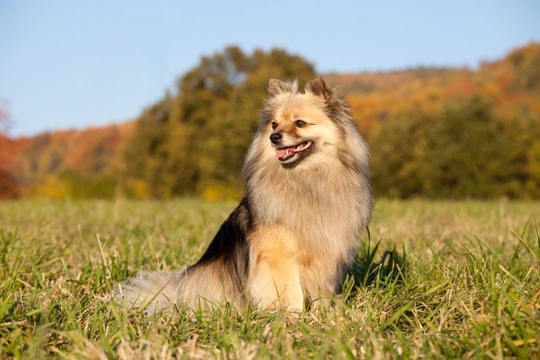
What Is a Spitz Dog? Traits and Popular Breeds Explained
Many breeds of dog popularly kept today are said to be ‘spitz’ dogs or ‘spitz type’ dogs. If you’ve been looking at a variety of different breeds and types of dogs with a view to finding the perfect future pet or companion for you and your family, you will possibly have already heard the term in usage and wondered exactly what it means, what type of dogs it encompasses, and if a spitz dog might be worthy of consideration as your future pet.
If you’re still finding the idea of spitz dogs a bit of a mystery and are looking for a little more information, read on to find out more!
So, what is a spitz dog?
A Spitz dog refers to a group of northern dog breeds characterised by distinctive physical traits evolved for cold climates. These include a wolf-like or fox-like head, erect pointed ears often covered in fur to prevent frostbite, and a dense double coat that stands off the body to provide insulation and repel water and ice. Their bushy tails typically curl naturally over their backs, often used to cover the nose to keep it warm when the dog sleeps.
The term ‘spitz’ is not a specific breed but rather a type classification, describing dogs with these signature features more than a direct common lineage. For instance, the Pomeranian puppies and the Siberian Husky puppies are both spitz type dogs but vary significantly in ancestry and size.
Spitz type dogs have ancient origins, often showing strong genetic ties to wild wolves. They have been historically bred for diverse functions including sled pulling, hunting, herding, and guarding in harsh northern and arctic regions. Today, many are cherished as loyal and energetic companions.
Typical Spitz Dog Breeds
The spitz category encompasses a broad range of breeds, estimated at between 50 and 70 globally. While definitive lists are still under scholarly discussion, commonly recognised spitz breeds include:
- Akita Inu puppies
- Alaskan Malamute puppies
- Siberian Husky puppies
- Pomeranian puppies
- Samoyed puppies
- Japanese Spitz puppies
- Chow Chow puppies
- Eurasier puppies
- Finnish Lapphund puppies
- German Spitz puppies
This list is by no means exhaustive. Many crossbreeds and mixed ancestry dogs may also display spitz type characteristics. Once familiar with the key physical traits, recognising spitz dogs in your area becomes much easier.
Owning and Caring for a Spitz Dog
One of the most distinctive features shared by spitz dogs is their thick, often double-layered coat with a fine topcoat and dense insulating undercoat. This luxurious fur requires regular, thorough grooming beyond simple brushing to avoid matting and skin issues. A comb is necessary to reach beneath the topcoat and detangle knots.
Spitz dogs tend to be loyal, inquisitive, and good-natured. They are generally trainable, although some can be stubborn and will benefit from consistent, firm handling. Due to their heritage as sled dogs and endurance runners in cold climates, they require ample daily exercise and mental stimulation. Many spitz breeds, particularly those of husky type, make excellent jogging or running companions, keeping pace with active owners.
These dogs usually get along well with children and other pets, but as always, individual temperament varies and prospective owners should consider the unique personality of each dog.
Finding a Spitz Dog Puppy
If you decide a spitz dog is the right choice for your family, it is important to seek out reputable breeders who prioritise health, temperament, and responsible breeding practices. You can find spitz puppy options through reputable breeders and ensure that your new companion receives proper veterinary care from an early age.
Responsible ownership means providing a loving home, proper training, regular medical check-ups, and sufficient exercise to keep these spirited dogs happy and healthy for years to come.



